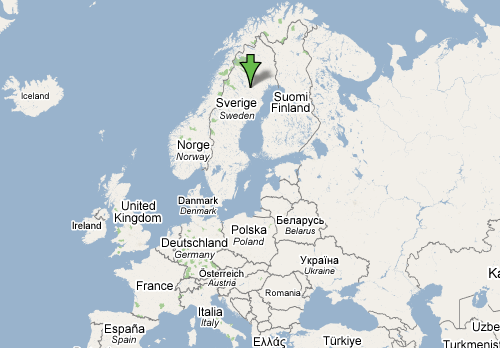

Birds and Climate Change

Masters Project on Siberian Jays
As part of my masters degree in ecology at the University of Zürich, I will carry out a research project concerning the population dynamics of Siberian jays, making use of data collected as part of a long-term project studying Siberian jays in Arvidsjaur. Already in 1953 a local amateur ornithologist, Folke Lindgren began studying Siberian jays in the area, but a more formal research protocol was initiated in 1988 by Professor Jan Ekman of Uppsala University. One of the prime aims of the research has been to understand more about social group living in birds, but it has also uncovered important relationships between forestry and population dynamics of the jays. You can read more about the project here.
In my masters project I will attempt to answer three questions:
1. How are projected changes is snow depth and temperature expected to affect the viability of the population?
- Research conducted by a previous masters student at UZH found that winter survival increases with an increase in snow depth and that reproductive success increases as spring temperatures increase.
- However, it is unclear how these mechanisms will affect population viability, especially as both snow depth and temperature are expected to change in the future as a result of human-induced climate change. I will try to clarify this by modelling the effects of projected changes in snow depth and temperature on population dynamics.
2. How do transient dynamics of the population compare to asymptotic dynamics?
- Asymptotic dynamics refers to the long-term stable dynamics of a population, while transient dynamics refers to short-term dynamics of a population.
- Asymptotic and transient dynamics may differ substantially from each other, and considering that conservation projects work with short time-frames, studying short-term dynamics as opposed to long-term dynamics may be key in establishing efficient conservation strategies.
- Transient and asymptotic dynamics have never been compared in this population before, but considering the complex metapopulation dynamics that have been previously identified, I expect some differences between the two.
3. How are environmental effects on demography mediated by traits?
- The effect of environmental traits on demography can be mediated by phenotypic traits. For example, in yellow-bellied marmots effects of environmental change on survival rates was mediated by bodymass, in that climate-induced earlier emergence from hibernation resulted in a longer growing season and larger mass of the marmots, which consequently increased their survival and resulted in an increase in population size.
- Several traits are routinely measured in the Siberian jays, including body mass, tarsus length and fault bars (feather marks indicating the condition of the bird). These traits may increase the understanding of the mechanisms by which the environment influences demography of the Siberian jays.

Location of Arvidsjaur